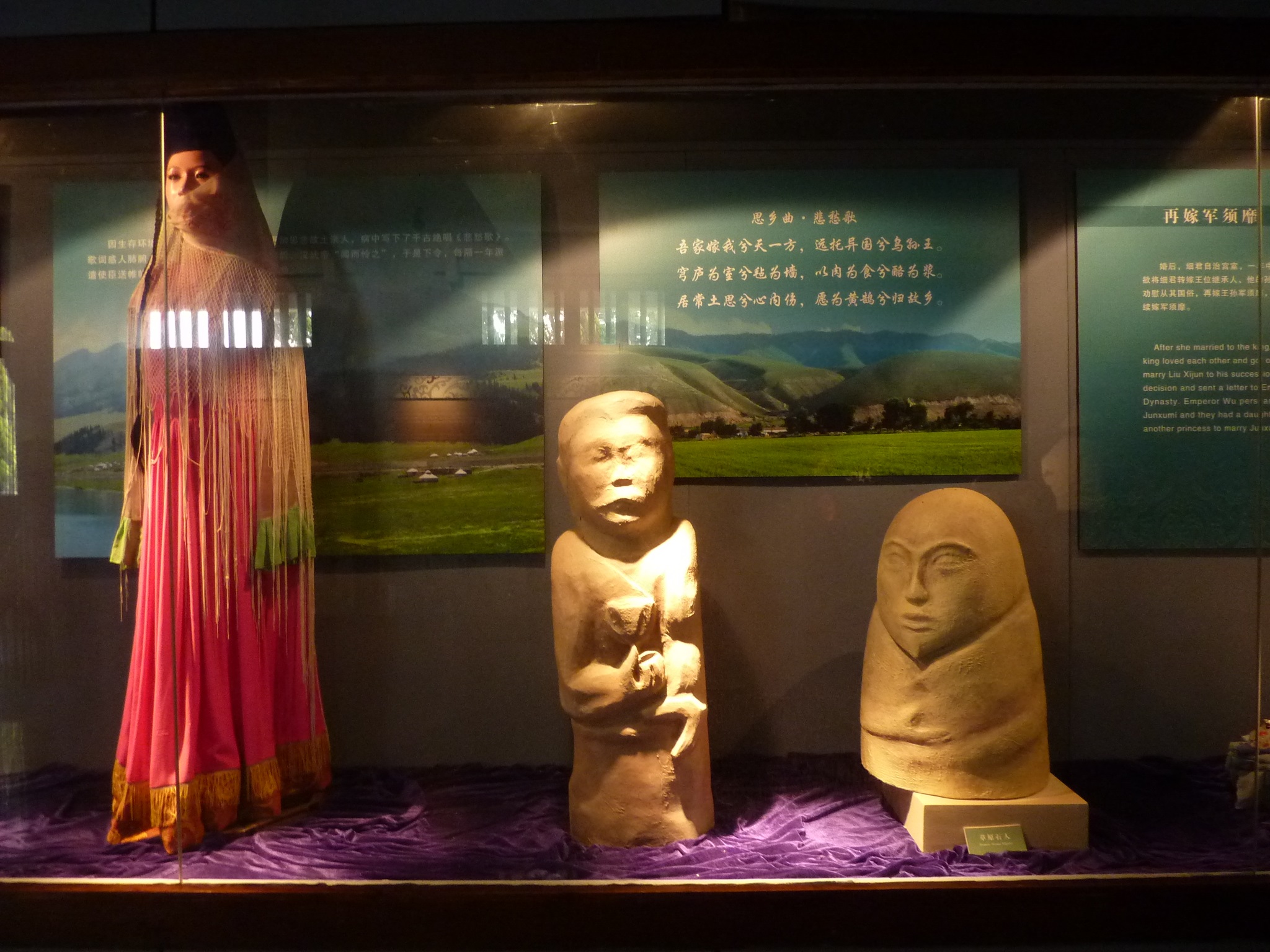Wusun King/Kunmo Liejiaomi 2nd C. BCE
"Shanyu Maodun, leader of the Xiongnu from approximately 209 and 174 BCE, was said to have indirectly caused chaos for the Wusun people by driving a group known as the Yuezhi into Wusun territory near the end of his reign. The then khan, or kunmo, of the Wusun was reportedly named Nandoumi, and he fought back against the Yuezhi incursion into his land. Nandoumi, however, died in battle and the Wusun people had to flee to the Xiongnu for protection. During the retreat, possibly due to politics after the kunmo’s death, Nandoumi’s young son, Liejiaomi, was reportedly left behind to face the wild alone.
Yet—as folkloric origin stories of kingly or heroic figures often go—mother nature and her animals took pity of young Liejiaomi and cared for the abandoned boy during this vulnerable time. Grand Historian Sima Qian (c. 145-90 BCE), citing an explorer who interacted with the Wusun, wrote that Liejiaomi, “then only a baby, was cast out in the wilderness to die. But the birds came and flew over the place where he was, bearing meat in their beaks, and the wolves suckled him, so that he was able to survive” (Shi Ji 123). Living on bird regurgitation and wolf milk, Liejiaomi stayed alive long enough to be rediscovered by the Xiongnu, who were impressed by his survival skills. By this time Shanyu Jizhu was reportedly in power, a position he would have over the Xiongnu from around 174 to 159/158 BCE. As the stories go, Jizhu gave shelter to Liejiaomi and took interest in raising the boy, encouraging his education in the ways of leadership and war.
When Liejiaomi grew to adulthood, he was given a military command and eventually was supported by the shanyu in becoming the next kunmo of the Wusun. In conjunction with the Xiongnu, Kunmo Liejiaomi was able to have his revenge against the Yuezhi, pushing them westward toward the region of modern Uzbekistan, allowing for the Wusun to claim the vacated land left by the Yuezhi. Despite this partnership, Kunmo Liejaomi and the Wusun would eventually be recruited by the expansionist Emperor Wu of Han China (r. 141-87 BCE) to combat the Xiongnu."
-Written by C. Keith Hansley, from the The Historians Hut
Source:
https://commons.wikimedia.org/wiki/File:Wusun_king_Kunmo_%28Balbal%29.jpg
Quote:
https://thehistorianshut.com/2020/01/14/the-folkloric-origin-tale-of-kunmo-liejiaomi/

.jpg)


Comments
Post a Comment